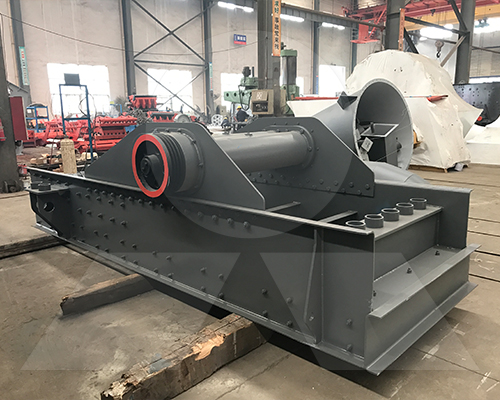Robust Design and Stable Performance of Vibrating Feeders
Vibrating feeders with robust design and stable performance are essential in various industries for efficient material handling. These feeders are widely used to transport a variety of materials, ensuring smooth and continuous flow in manufacturing and processing operations. This article explores the features, benefits, and applications of vibrating feeders, emphasizing their importance in maintaining operational efficiency and reliability.
Features of Vibrating Feeders
Vibrating feeders are designed to provide a consistent and controlled feed of materials, thanks to their advanced engineering and durable construction. Key features include:
- Robust Structure: Built with high-quality materials, vibrating feeders are designed to withstand heavy-duty operations and harsh industrial environments. Their sturdy construction ensures long-term durability and minimal maintenance requirements.
- Stable Vibration: Advanced vibration mechanisms ensure a steady and controlled flow of materials. This stability is crucial for preventing blockages and ensuring efficient material transport.
- Adjustable Settings: Many vibrating feeders come with adjustable vibration intensity and feed rate, allowing operators to fine-tune the equipment to meet specific operational needs.

Benefits of Using Vibrating Feeders
- Enhanced Efficiency: Vibrating feeders provide a consistent and continuous flow of materials, reducing downtime and increasing overall productivity. Their stable performance ensures that production lines operate smoothly without interruptions.
- Reduced Maintenance: The robust design of vibrating feeders minimizes wear and tear, reducing the frequency and cost of maintenance. This reliability translates to lower operational costs and higher profitability.
- Versatility: Vibrating feeders can handle a wide range of materials, including bulk solids, granules, and powders. This versatility makes them suitable for various industries, from mining and construction to food processing and pharmaceuticals.
- Precision Control: The ability to adjust vibration intensity and feed rate allows for precise control over material flow. This precision is essential for processes that require accurate dosing and consistent quality.
- Improved Safety: By providing a controlled and stable feed of materials, vibrating feeders enhance workplace safety. They reduce the risk of spillage and material handling accidents, creating a safer working environment.
Applications in Various Industries
Vibrating feeders are integral to numerous industrial applications, ensuring efficient material handling and processing:
- Mining and Quarrying: In the mining and quarrying industries, vibrating feeders are used to transport bulk materials such as ore, rock, and minerals. Their robust construction makes them ideal for heavy-duty operations in harsh environments.
- Construction: In the construction industry, vibrating feeders are employed to move construction aggregates, sand, and gravel. Their stable performance ensures a consistent supply of materials to crushers, screens, and other processing equipment.
- Food Processing: Vibrating feeders are used in the food processing industry to handle ingredients, additives, and finished products. Their precision control allows for accurate dosing and mixing, ensuring consistent product quality.
- Pharmaceuticals: In the pharmaceutical industry, vibrating feeders are used to transport powders, granules, and tablets. Their hygienic design and precision control are critical for maintaining product integrity and meeting regulatory standards.
- Chemical Processing: Vibrating feeders are also used in the chemical industry to handle various raw materials and chemicals. Their robust design ensures safe and efficient transport, even in corrosive environments.
Case Studies and Success Stories
Several companies across different industries have reported significant improvements in operational efficiency and reliability after integrating vibrating feeders into their processes. For example, a mining company in Australia noted a 25% increase in material throughput and a 15% reduction in maintenance costs after installing vibrating feeders in their crushing and screening operations.
Conclusion
Vibrating feeders with robust design and stable performance are indispensable tools for efficient material handling in various industries. Their durability, precision control, and versatility make them a valuable asset for operations that require consistent and reliable material transport. As industries continue to evolve and demand higher efficiency, the role of vibrating feeders in maintaining operational excellence will remain critical. Investing in high-quality vibrating feeders ensures long-term benefits, including increased productivity, reduced maintenance costs, and improved safety.
- > Colombian-Made Mobile Impact Crusher
- > Single-Cylinder Cone Crusher in Iron Ore Processing
- > Mobile Vibrating Screens for Sand Processing in Malaysia
- > Mobile Conveyors for Efficient Transportation of Stone and Soil
- > Impact Crusher Working Principle: A Simple Guide to How It Works
- > Crawler Mobile Cone Crusher for Fine Crushing in Gold Mining
- > The Role of Mobile Construction Waste Crusher in Road Renovation Projects
- > Tracked Mobile Cone Crusher in Recycled Aggregate Production from Construction Waste
Hot Product


Online




Message
